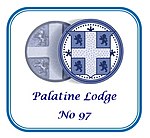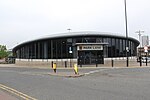Ashbrooke

Ashbrooke is a residential area of Sunderland, North East England directly south and south-west of the city centre. Ashbrooke developed through the Victorian era as Sunderland's first suburb. Originally occupied by large middle-class families, including much of Wearside's Jewish population, a fair number of the larger residences have been reorganised into dwellings of multiple occupancy, home to the local University of Sunderland's students and young professionals. The large, well-built houses, the wide, tree-lined avenues, and the often colourful street names ('The Esplanade', 'The Oaks', 'The Elms', 'West Lawn', 'Holmlands Park') signify the area's affluence. The area lies within walking distance of Park Lane and University stations on the Tyne and Wear Metro system. Local punk band The Toy Dolls wrote a song about Ashbrooke Launderette on their 1987 album Bare Faced Cheek. Various members of the band still either live or work in Ashbrooke. Ashbrooke is part of St. Michael's ward and is represented by three Conservative councillors; Lyall Reed, Peter Wood and Michael Dixon.
Excerpt from the Wikipedia article Ashbrooke (License: CC BY-SA 3.0, Authors, Images).Ashbrooke
Meadow Vale, Sunderland Ashbrooke
Geographical coordinates (GPS) Address Nearby Places Show on map
Geographical coordinates (GPS)
| Latitude | Longitude |
|---|---|
| N 54.895 ° | E -1.388 ° |
Address
Willow Green
Meadow Vale
SR2 7RZ Sunderland, Ashbrooke
England, United Kingdom
Open on Google Maps






